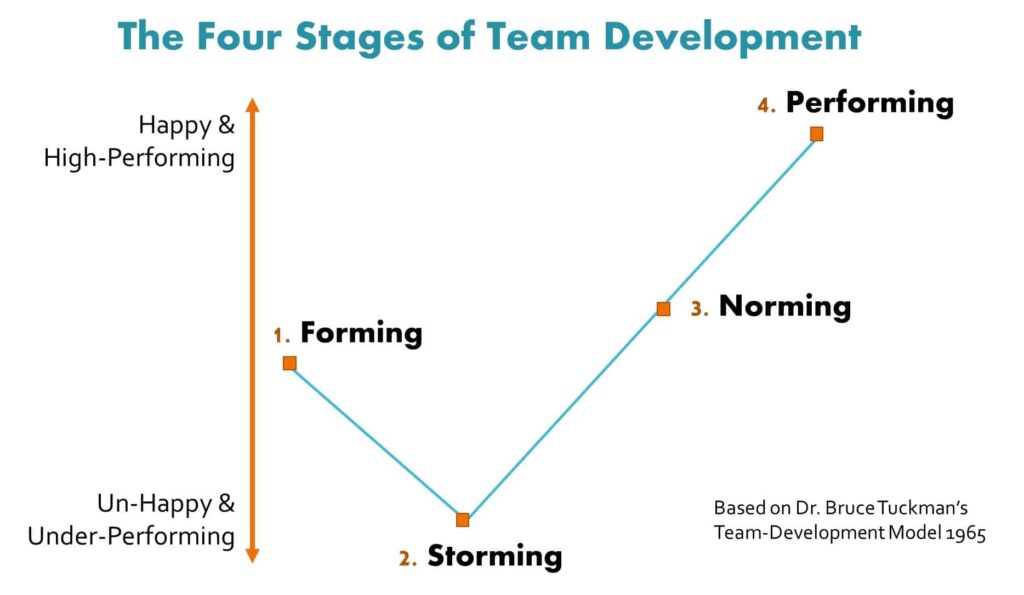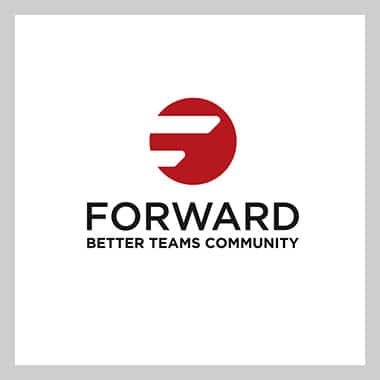Understand What Stage They Are In
Teams go through many stages as they evolve and change over time. Bruce Tuckman’s Stages of a Team model provides a simple model to understand the different phases that teams experience from inception to end.

The Four Stages of Team Development
Phase 1: Forming
During forming a team is just getting started. The team has not clearly defined and aligned around goals, roles, or processes. Relationships are new and team members are just beginning to know each other. The team is heavily relying on the leader for guidance and direction. The forming stage can be exciting or stressful.
Phase 2: Storming
After the team has formed, it moves into the storming phase. When storming, the team has many conflicts (both direct and indirect) about goals, roles, and processes. Team members may be competing for status as power struggles emerge. Storming is a time of uncertainty and tension.
Phase 3: Norming
Most teams move past storming and into norming. During norming, the group aligns about the goals, roles, and ways of working. Team members begin to establish stronger working relationships with each other and the leader. Norming is when the team is comfortable, productive, and might even be having fun together.
Phase 4: Performing
Ideally, teams reach the fourth phase which is performing. Performing occurs when the team is entirely in sync and working together towards the future. High-performing teams are innovative and strategic, and they openly debate and trust each other. A team that is performing is established and optimized.
Phase 5: Adjourning
Not every team will adjourn. Some teams are set up to accomplish a specific task and once it is done, the team will officially end. During this phase, the team has completed their work or decided not to continue working together.
It’s important to note that while this model seems linear, teams can move back and forth between these phases. Each time a team experiences a change, the team is likely to move back into storming. A high-performing team will move through storming quickly because they have systems and trust in place to resolve differences and realign.
When I am called to work with a team, they are often in the Storming phase, and I find that sharing this model and discussing the stages normalizes what feels like a stressful and uncertain time for the team. Then, the team can talk about what they want to do to move into Norming and Performing.
Would you like to share this model with your team to get them to discuss what stage they are in? Better Teams offers a team activity using Tuckman’s Model, including slides if you’d like to use this with your team.
About the Author: Leigh Ann Rodgers, Founder of Better Teams and the Forward, community, is an IAF Certified Professional Facilitator with 20 years of experience in the human development field. Leigh Ann is a skilled meeting facilitator, trainer, and coach working across the globe to help leaders cultivate teams that are happy and high-performing.
Learn. Share. Practice. Move FORWARD. Join the Better Teams community, FORWARD, to network and grow with some of the most experienced professionals in the field of team building and facilitation. LEARN MORE

